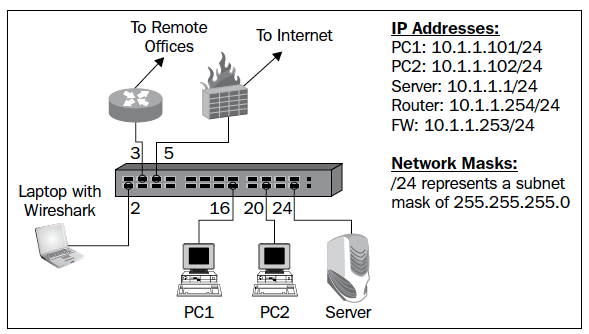IPv4 address resolution protocol operation and troubleshooting
Ethernet is the popular and predominantly deployed Local Area Network (LAN) technology, spanning a transmission speed rate of 10 Mbps to 400 Gbps. This data link layer protocol uses a 48-bit MAC address as a data link layer identifier. In this recipe, we will discuss the IPv4 ARP and its related issues.
Getting ready
In the bottom-up troubleshooting approach, the first step for any connectivity issue is to ensure that the ARP resolution is successful for the respective IP address.
How to do it...
Consider the following screenshot of LAN topology:

LAN topology
In the preceding scenario, assume PC1 is trying to reach PC2:
- Trigger ping probes from PC1 (
10.1.1.101) to PC2 (10.1.1.102). This will trigger an ARP request from PC1 to PC2. - Check the ARP table on PC1 using
arp-a, to see whether the MAC address for10.1.1.102is populated in the local table. - If you see the MAC address for
10.1.1.102in the PC1 local table, that confirms that PC1...




































































